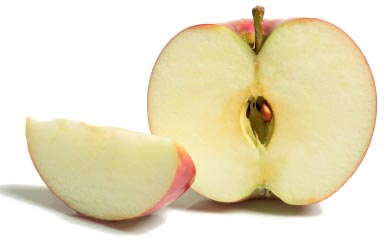Curiosities: Why do apple slices turn brown?
The moment a knife slices through apple—spilling the contents of apple cells along the surface of the cut, and allowing everything to mix—a reaction begins. In particular, an enzyme known as polyphenol oxidase that had been held in check is loosed.

Almost immediately, it begins altering polyphenols, a group of health-promoting chemicals with antioxidant activity that naturally occur in apples and other produce.
“As soon as you break the apple cells, you expose (the enzyme) to polyphenols and oxygen, and then it goes after the polyphenols and breaks them down. There’s a whole set of chemicals produced, and one set of the chemicals is colored,” explains Rich Hartel, a professor of food science at UW–Madison.
It is believed that this reaction, called enzymatic browning, is a form of plant defense against pests and pathogens, says Hartel. Some of the chemicals created via this reaction have been shown to help ward off invading organisms.
In addition to apples, enzymatic browning is evident in avocadoes and potatoes. It’s also what gives raisins, prunes and apple cider their deep hues. Interestingly, these brownish-colored chemicals belong to a family of pigments known as melanins, some of which give human skin its color.
Tags: curiosities, food science
